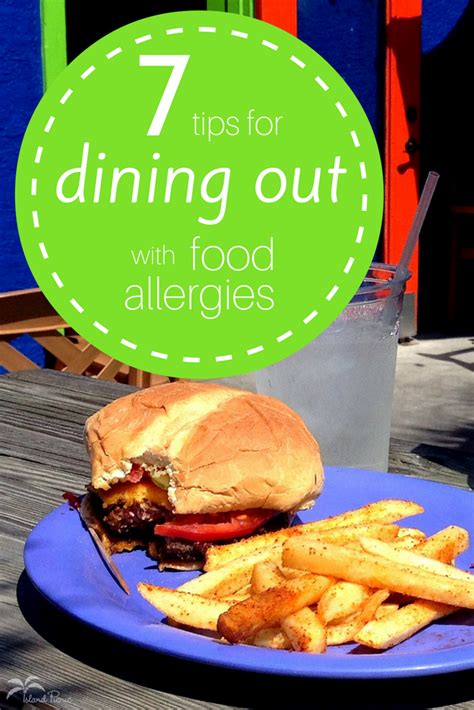3 Strategies For Dining Out With Food Allergies
Food allergies affect up to 20 million people in the US and approximately 3 million people in Canada. For people with severe allergies and intolerances,... The post 3 Strategies For Dining Out With Food Allergies appeared first on Academy of Culinary Nutrition.

Food allergies affect up to 20 million people in the US and approximately 3 million people in Canada. For people with severe allergies and intolerances, eating out at restaurants or at a dinner party can be fraught with anxiety and fear. Some people even avoid being social due to their allergies – that’s something I hear quite frequently. But it doesn’t have to be that way. There are some simple strategies you can implement when dining out with food allergies that will keep you healthy and safe.
I avoid gluten, soy and refined sugars for personal reasons and when I found out I was allergic to nightshades (tomatoes, potatoes, peppers, eggplant), my first thought was what am I going to eat and how can I eat out? Well, I am happy to say that in the last two years I have learned a lot about food, nutrition and how to eat out. The following strategies to dining out with food allergies have helped me immensely and can help you minimize risks and stay healthy, too.
Strategies For Dining Out With Food Allergies
1. Do your research in advance
Research is a big part for those of us who either have food allergies or intolerances. Most restaurants have online menus that you can look up ahead of time. Before you arrive at a restaurant, make note of 2 or 3 options that would be suitable for you and be prepared with questions.
If you have a severe food allergy, it’s helpful to call ahead of time to ask questions and advise the restaurant staff of your needs. That way, everyone is prepared and you won’t show up to discover there is nothing safe available for you to eat.
During holidays and events, pre-set menus or buffets are common but don’t despair. Call the location that is hosting the event and ask for the type of service and the menu items they will be serving. Ask for the head chef’s details so you can contact them ahead of time to ask questions about ingredients and food prep, or ask for a special meal.
2. Communicate about your allergies
Communication is key! The more restaurant staff, kitchen staff and friends know of your allergies the better and safer it is for you. Prepare, print, and laminate allergy cards. I have a few in my purse, in my husband’s wallet and in my vehicle. Ever since I started using these, my life is much better not only for me but also for those who are trying to prepare a meal for me. This is what my card looks like:
For the other foods I choose not to eat (gluten, soy, refined sugar) I select menu items that do not contain them and I avoid sauces, condiments and spice mixes as these can often contain nightshades and/or the other food I am avoiding.
At restaurants, hand your allergy card to your server and ask for them to give it to kitchen staff. If they return your card before you have been served, be wary! Ideally, your card will stay with your food ticket until you have been served.
If you are headed to an event, call ahead and speak to head chef and inform them of your requirements and follow up via email. When you arrive at the event, speak to head server and introduce yourself and hand them your card to ensure everything you will be served is okay. In my experience, I have always been brought a separate meal.
If attending a dinner party, let your friends know of your requirements but inform them you will bring a dish that can be shared. Even with our friends’ best intentions, a mistake can be made by simply using a stock, condiment, or spice you can’t have. Your friends will understand and not take offense, plus they will appreciate you bringing a dish because they know you will be okay and won’t feel as stressed either. Most likely there will be other dishes you can still enjoy.
3. Keep it simple
When dining out with food allergies it’s important to keep it as simple as possible. Here are some ways you can do this:
- Choose something on the menu that requires the least amount of substitutions. If you are allergic to gluten and dairy, a mac and cheese menu item is going to be tricky to modify. A dish of seared salmon with roasted vegetables drizzled with a cream sauce is much easier because you can simply remove the sauce. Aim for simple meals that only need simple substitutions so you don’t end up disappointed.
- When substituting, ask to swap for an ingredient that is mentioned elsewhere on menu. For example, if you are allergic to tomatoes, substitute with avocado if you see it on menu.
- Avoid sauces, condiments and dressings. These are often tainted with common allergens (especially if they’re store-bought). I always ask for lemon wedges and herbs because they are great on everything!
By implementing these strategies when dining out with food allergies, you can ensure your evening out is safe and delicious.
What are your best tips for eating out with food allergies?
The post 3 Strategies For Dining Out With Food Allergies appeared first on Academy of Culinary Nutrition.

 mainadmin
mainadmin 









